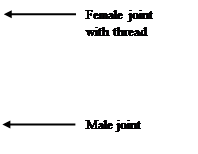

Meeting 8 (Problem Set)
1. Announcements:
a. The Grignard project will take about 1.5 lab periods. Thus, most of the students will finish up the project during meeting 9. In addition, there will be also an NMR lab during this meeting which is also mandatory.
b. Students will not be allowed to attend a different lab section to finish up their work. This poses a significant safety risk and usually ends up that many sections are entirely overcrowded, which results a very low overall productivity and lots of complaining students.
2. Experimental
a. If you receive a two-necked or three-necked flask instead of a simple round bottom flask, you do not need to use a Claisen adapter in your setup anymore because there are enough outlets already
(two outlets are needed: one for the rubber septum, one for the air
condenser). If you break the round bottom or two/three-necked flask, you will receive an automatic zero for the lab because it shows carelessness. In addition, you will have to pay for the damage! So make sure to clamp the flask properly at the neck.
b. The male joints of the air condenser and the drying tube (and the
Claisen adapter if it is used) have to be lightly lubricated to provide
a better seal.
 |
 |
ATTN: answers to the below questions are due at the start of your lab period; these answers should be part of your pre-lab write-up
1. After reviewing the chapter about "Polarity" and "Green Chemistry" in the reader very carefully, take the online quiz.
(http://bacher.chem.ucla.edu/TakeQuiz/?id=c74d97b01eae257e44aa9d5bade97baf). The quiz is worth
10 points, and has to be taken until one hour prior to the regularly scheduled in-lab meeting 8. Even though you can take the quiz until one hour prior to meeting 8 of your section, you should not delay taking it since there might be some problems with the server. There seem to be problems with some MAC systems as well. After you submit the answers, your score should appear on your screen. If this does not happen, you will have to retake the quiz. (There will not be any possibility to retake the quiz weeks later!). In order to take the quiz, you have to go through a UCLA ICP address. This means that you either have to use your Bruin-Online account or go through the VPN (Virtual Private Network, software can be found here: http://www.bol.ucla.edu/services/vpn/) to have this UCLA ICP address. To log in, use your last name and your student ID. If you are experiencing problems, contact the instructor via email and include your full name (indicated which one is your last name), your student ID and section .
2. Referring to the Grignard reaction, answer the following questions. Show pertinent chemical equations where appropriate.
a. Why is it important to exclude water from the reaction? Name three methods how is this accoomplished in Chem 30BL.
b. In the initial stage of the reaction, the Grignard solution is diluted and chilled before the benzoin solution is added. Why is this necessary?
c. Which solvent is used to dissolve the benzoin? Which precautions have to be taken here?
d. After the reaction was terminated, 10 % sulfuric acid is added to the reaction mixture. Provide a balanced chemical equation for this step. Which precautions have to be taken here?
e. After the reaction in d., the reaction mixture is treated with sodium bicarbonate. What would the student observe if he skipped this step?
f. A student only removes half of the solvent using the rotary evaporator before proceeding with the recrystallization. Which problem does this pose?
g. What is high-boiling petroleum ether?
h. Which information does the student gather from the gas chromatogram of the crude?